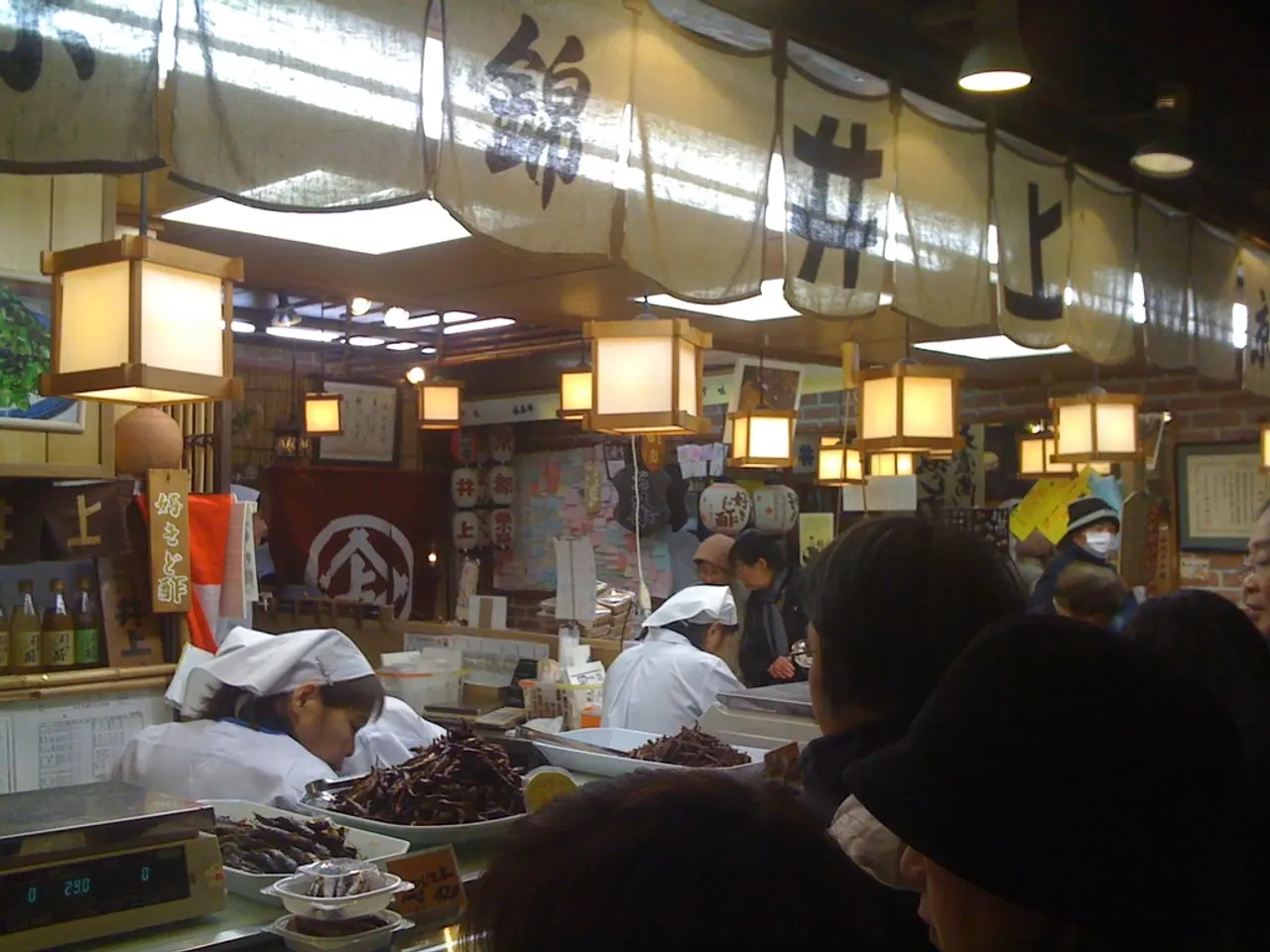Struggling times for standalone eateries
=====================================================================================
In the face of extreme weather events, regulatory changes, and fluctuating supply chains, independent restaurants in the United States are adapting to rising costs, staffing shortages, and evolving consumer behaviors. Here's how they're doing it.
Strengthening Off-Premise Dining
With off-premise dining (takeout, delivery, drive-thru) becoming essential, independent restaurants are building data-driven strategies to boost these sales channels efficiently. This shift from convenience to primary dining modes, especially among Millennials and Gen Z consumers, has been a game-changer [1].
Adjusting Pricing and Focusing on Community Connection
Resilience for independents involves adjusting prices to offset inflation and rising costs, but without losing customer loyalty. Hospitality, culture, and local engagement remain key to maintaining a connection with the community [2]. Despite narrow profit margins (3-5% on good days), independents are emphasizing these aspects to stay competitive.
Utilizing Grant and Relief Programs
Financial support is crucial for independent restaurants. Programs such as the $4 million fund from the Independent Restaurant Coalition and Chase are helping restaurants recover from disasters and implement adaptive strategies, focusing on innovation, sustainability, and community impact [3].
Reducing Costs from Third-Party Delivery Fees
Adopting commission-free or low-fee online ordering platforms is a strategy that improves profitability. Restaurants are seeking solutions that offer branded ordering sites, direct payments, and integration with existing systems with minimal fees [4].
Innovative Marketing and Value Offerings
Loyalty programs, value-driven combo meals, and AI-driven pricing and inventory management are among the creative strategies used to reignite customer loyalty and attract cost-conscious diners facing inflation [5].
Emphasis on Local Sourcing, Sustainability, and Employee Well-Being
A strong emphasis on local sourcing, sustainability, and employee well-being also supports operational stability and community support, helping restaurants differentiate themselves in a competitive market [2][3].
Diversifying Suppliers, Simplifying Menus, and Responding to Consumer Preferences
Some restaurants are diversifying suppliers, simplifying menus to spotlight less costly domestic ingredients, and re-negotiating contracts to lock in stable prices. Others are adapting by responding to consumer preferences for affordable quick-service options and home-cooked meals [6].
Staffing Shortages and Reinventing Business Models
With profit margins often less than 5%, the test for independents in 2025 is tougher than ever: managing costs and winning back customers, all while staying true to their culinary vision. Many full-service restaurants are especially strained, falling 3% short of pre-pandemic staff levels. To cope, many operators are reinventing their business models, embracing automation where possible, and promoting the unique qualities of independent dining [7].
A Decrease in Dining Out
More than one-third of Americans now report dining out less in 2025, posing a challenge for the industry. Independent venues are still short thousands of positions compared to pre-pandemic norms [8].
In conclusion, independent restaurants are combining technology adoption with community-centered hospitality, creative pricing and marketing, and financial support avenues to navigate the complex challenges of 2025.
Read also:
- Editorial Correspondence: Justifying the Elimination of a Program Earmarked for Reducing Our Own Carbon Footprint?
- Delivery costs in St. Petersburg are forecasted to surge following Beglov's decision
- Image Collection: NZI's Renewable Energy Infrastructure Event of 2025
- Global Hydrogen in the Developing World: Unraveling Reality Beyond the Buzzword




